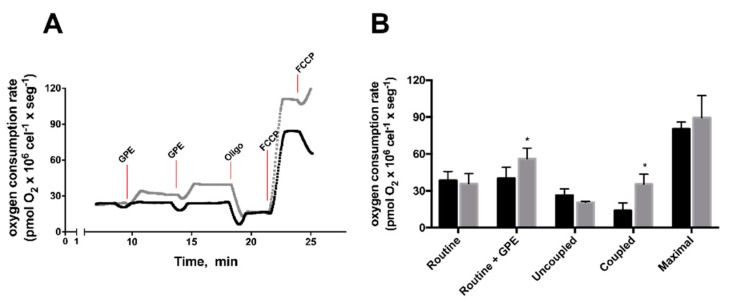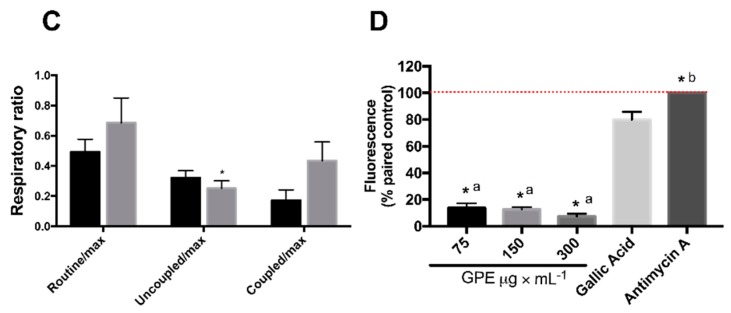Figure 4.
Grape pomace extract (GPE) increased mitochondrial respiration and antioxidant capacity in HepG2 cells: (A) Representative traces of oxygen consumption in control (black trace) and GPE-treated (gray trace) cells. Routine respiration was evaluated after 2 consecutive additions of GPE (300 μg × mL−1, each), following the addition of olygomycin (1 μg × mL−1), to measure oxygen consumption uncoupled to ATP synthesis and the ionophore FCCP (250 nmol × L−1), to induce maximal respiration; (B) Control and GPE incubated HepG2 average routine respiration, uncoupled and coupled respiration to ATP synthesis (measured after oligomycin addition) and FCCP-induced maximal respiration, calculated from the traces shown in A; (C) Respiratory ratios, calculated from data presented in B; (D) Antioxidant capacity of HepG2 cells incubated with GPE: Cells were incubated in the absence or presence of GPE at the indicated concentrations for 1 h. Fluorescence was expressed relative to control, normalized by maximum fluorescence, in the presence of Antimycin A (2 μg × mL−1). Gallic Acid was used as a standard antioxidant molecule. * Oxygen consumption rates and respiratory ratio different from control HepG2 (p < 0.05); * Fluorescence different from Antimycin A (p < 0.0001); Distinct letters: Fluorescence different from Gallic Acid (p < 0.01). Red line indicates maximum fluorescence (100%) after Antimycin A addition.


